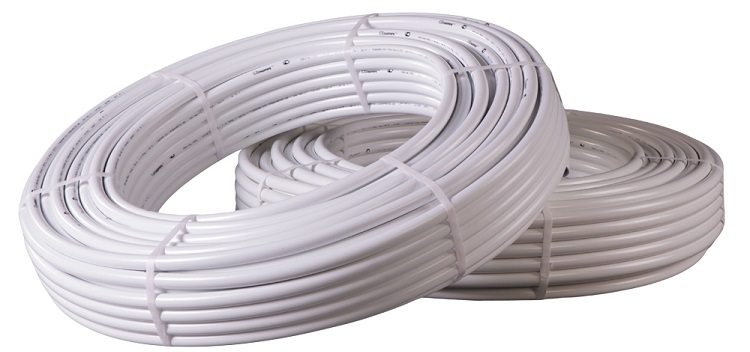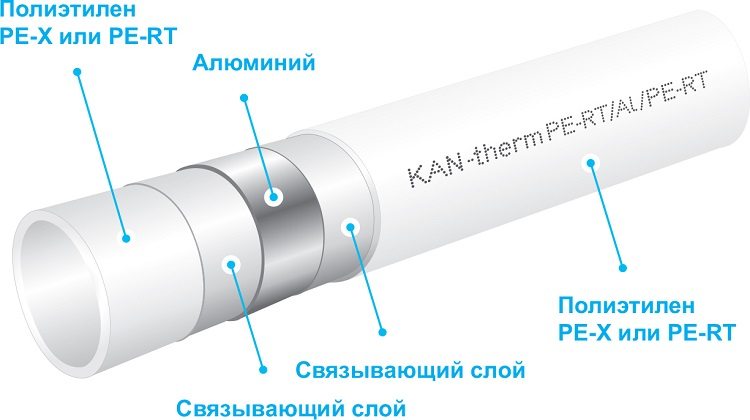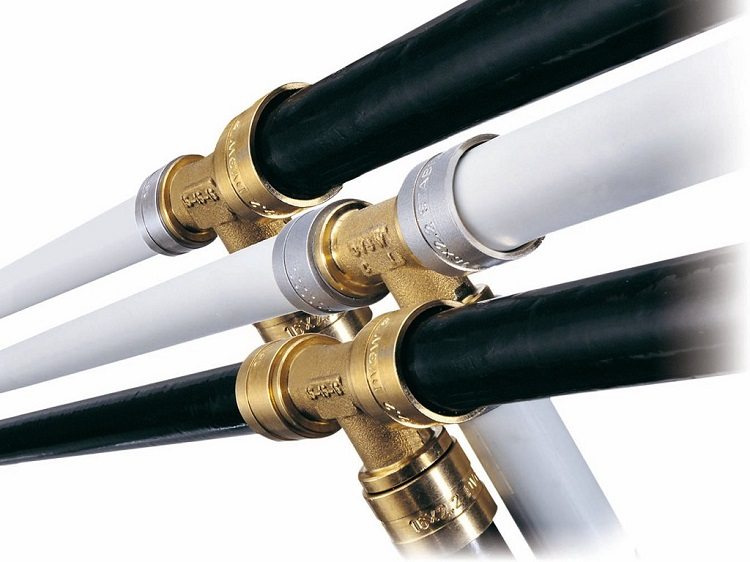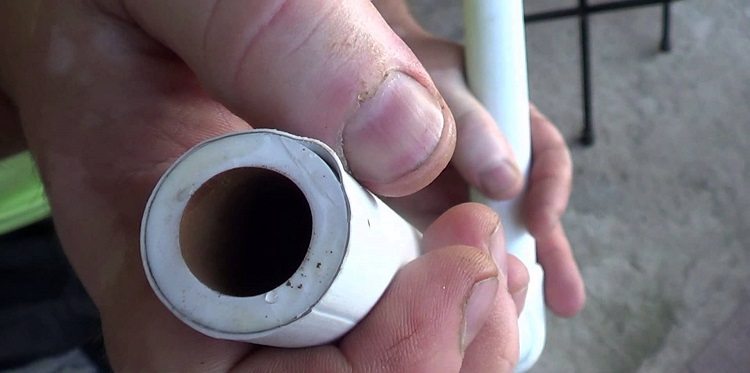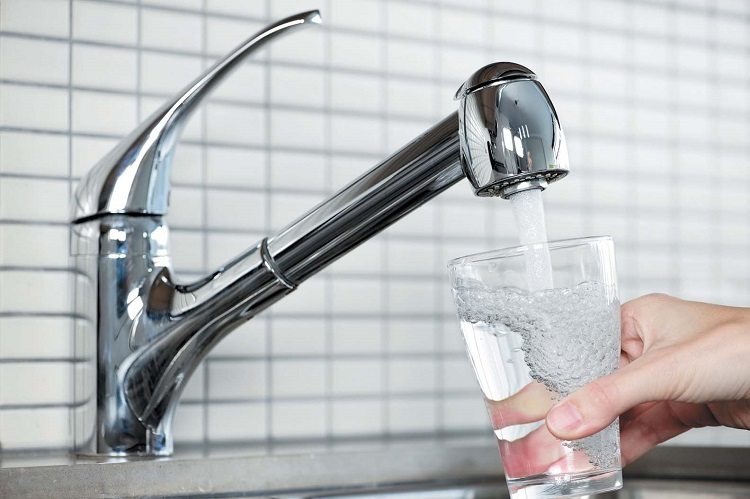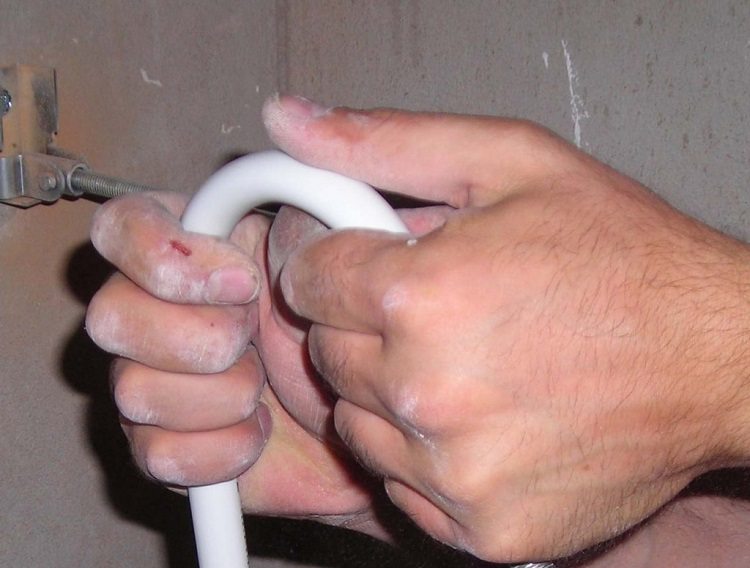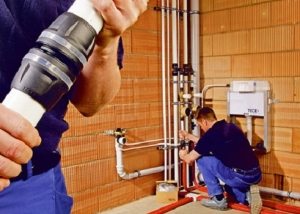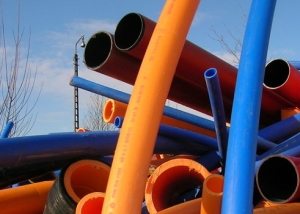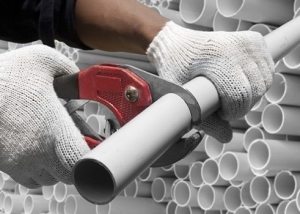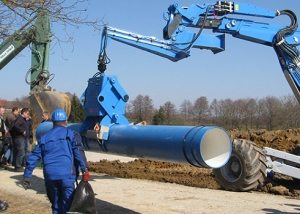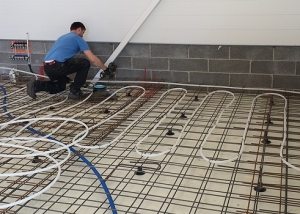Pipes made of metal-plastic have become widespread due to the combination of the properties of plastic and metal pipes. They are distinguished by good flexibility, anticorrosion properties and durability of use. Which metal-plastic pipe is better to use depends on the choice of purpose: all kinds of water supply systems (cold and hot), air conditioning, complexes that transport compressed air, etc.
Content
Features of the structure of metal-plastic pipes
All types of metal-plastic pipes consist of five layers: the inner and outer are made of polymer, the intermediate - of aluminum. Between the polymer and aluminum is an adhesive layer. The outer layer of plastic protects the pipe from damage of a mechanical or chemical nature, reduces the intensity of condensation due to a decrease in the thermal conductivity of the product.
The outer layer of the pipe allows its use in aggressive environments. The intermediate aluminum layer provides the necessary stiffness characteristics of the metal-plastic pipe, partially allows you to compensate for the thermal expansion and serves as a barrier to the penetration of oxygen. The inner layer has a very smooth surface, which leads to a decrease in internal resistance when the fluid moves through the pipe and prevents the appearance of rust or deposits in the pipe. Glue layers reliably fasten an aluminum layer with internal and external, providing good technical characteristics of a metal-plastic pipe.
The outer and inner layers are produced by crosslinking polyethylene molecules. In the process of crosslinking, polyethylene molecules form spatial homogeneous structures, so the pipe is seamless.
Characteristics for pipes of different diameters
Seamless metal-plastic pipes are produced with the following standardized standard sizes of outer diameter: 40 mm; 32 mm; 26 mm; 20 mm and 16 mm. In the general case, pipe sizes range from 1.6 cm to 6.3 cm. In this case, technical characteristics common to all these sizes can be distinguished. A metal-plastic pipe, regardless of diameter, has the features indicated in the table.
Table 1
| Index | unit of measurement | Numerical value |
| Working temperature | ° C | up to 95 |
| Coefficient of thermal expansion | μm / m at 1 ° С | 26 |
| Operating pressure | MPa | up to 1.013 |
| Adhesive strength | N / cm | 70 |
| Welding strength of aluminum | N / mm² | 57 |
| Roughness (coefficient) | — | 0,07 |
| Thermal conductivity (coefficient) | mW / (cm * K) | 4,5 |
In addition, in order to prevent destruction of the pipe during operation, it should be taken into account what pressure the plastic pipes can withstand and what is the maximum temperature. These indicators are equal to 1.52 MPa and 120 ° C, respectively.
The service life of plastic pipes is 50 years.The heat transfer of such pipes is low, which makes it impossible to use them in central heating systems.
Important! An excess of temperature of 140 ° C leads to a softening of the inner layer of the polymer, as well as to delamination of the structure of the metal-plastic pipe.
Interdependent indicators of plastic pipes
Such characteristics of metal-plastic pipes as internal and external diameters, wall thickness, their weight, useful internal volume are interdependent.
table 2
| Index | Numerical value | unit of measurement | ||||
| 16 | 20 | 26 | 32 | 40 | ||
| Pipe wall thickness | 0,2 | 0,2 | 0,3 | 0,3 | 0,35 | cm |
| Weight of 1 linear meter of pipe | 0,115 | 0,170 | 0,300 | 0,370 | 0,430 | kg |
| Inner diameter | 1,2 | 1,6 | 2,0 | 2,6 | 3,3 | cm |
| The volume of fluid in 1 linear meter of pipe | 113 | 201 | 314 | 531 | 855 | ml |
According to the size of the inner diameter, technical calculations are made of fluid flow, allowable pressure and temperature. This information is important in determining which connecting and stop valves are best for mounting. The wall thickness of the metal-plastic pipe depends on the materials used by the manufacturer, as well as on the outer diameter. The maximum value of the working pressure that can be created in the pipe depends on the temperature of the fluid that flows through it. The higher the temperature, the lower the pressure must be.
Seamless metal-plastic pipe withstands pressure up to 25 atm at temperatures up to 20 ° C and pressure up to 10 atm at operating temperature of 95 ° C. If these conditions are not satisfied, delamination and rupture of the pipe will occur. The mechanism for the production of pipes made of metal-plastic has influenced the temperature resistance of metal-plastic pipes. The passage of liquid with a temperature of up to 110 ° C, in some cases up to 120 ° C, is allowed for a short time. In this case, the integrity and basic technical parameters will not be violated, but some deformation of some sections is possible, which can significantly reduce the service life for plastic pipes.
Plastic pipes: other specifications
Plastic pipes, the heat transfer of which is almost 175 times lower than the heat transfer of steel pipes, are absolutely not profitable to use for space heating. Their heat transfer is about 36%, so such pipes are undesirable in heating systems. There are technical parameters of pipes that describe the possibility of working without destruction. These characteristics are presented in the table.
Table 3
| Index | Numerical value | unit of measurement | ||||
| 40 | 32 | 26 | 20 | 16 | ||
| Transverse tensile strength | 3570 | 3430 | 3260 | 3050 | 2880 | N |
| At a temperature of 20 ° C, the fracture pressure | 67 | 74 | 88 | 87 | 94 | Bar |
| Resistance to constant pressure and temperature of 20 ° С for at least 1 hour | 4,84 | 5,12 | 5,43 | 5,1 | 5,71 | MPa |
| Resistance to constant pressure and temperature of 95 ° C for at least 1 hour | 2,95 | 3,03 | 3,18 | 3,03 | 3,3 | MPa |
| Resistance to constant pressure and temperature of 95 ° C for at least 100 hours | 2,62 | 2,7 | 2,83 | 2,69 | 2,93 | MPa |
| Resistance to constant pressure and temperature 95 ° С for at least 1000 hours | 2,31 | 2,44 | 2,52 | 2,36 | 2,57 | MPa |
The throughput of such pipes is almost 1.3 times better than that of metal counterparts.
Important! Plastic pipes can be used in the drinking water supply system, since the inner layer is made of food-grade plastic and does not contain harmful substances.
Also, metal-plastic pipes have better sound insulation indicators, which makes the noise of water practically inaudible, there is no accumulation of static voltage.
How to bend a metal pipe
A seamless metal-plastic pipe can be bent without losing its technical characteristics:
- manually;
- using a special spring;
- using a pipe bender.
To obtain a small bending radius on a long pipe section, it is better to use a pipe bender. With manual bending, it is possible to obtain large bending radii in small segments. These conditions are fulfilled when bending with a spring.You must be able to insert and remove it after performing bending. The minimum bending radius of the pipe will prevent mechanical damage, ensure the preservation of the value of the bore inside the pipe. It depends on the outer diameter.
Table 4
| Outside diameter of a pipe, mm | Minimum radius, mm | ||
| Manually | Using spring | Using pipe bender | |
| 16 | 80 | 50 | 45 |
| 20 | 100 | 65 | 60 |
| 26 | 130 | 105 | 95 |
| 32 | 160 | 135 | 125 |
| 40 | 550 | 220 | 180 |
In the design of the pipe there are 2 materials of various properties - metal and plastic. These materials have different expansion ratios. Due to the constant changes in the temperature of the liquid that flows through them, weakening can occur at the joints, leading to leaks. For this reason, plastic pipes must not be laid with tension.
It is better not to bend the pipe many times, as this can violate the integrity of the product. An ideal option would be to use specially-cut patterns of the right size to bend.
Plastic pipe marking
Labeling of metal-plastic pipes by different manufacturers may vary in the sequence of values of the marking code. Often it has the following sequence:
- Name of the pipe manufacturer.
- Certificate of conformity for the production of pipes.
- Design features.
- Diametric characteristics, wall thickness. Designations are given in millimeters.
- The value of the nominal pressure. The indicated value is the water pressure in the metal-plastic pipe at an ambient temperature of 20 ° C.
- Designation of the medium that is suitable for transportation.
- Date with batch number.
Design features include pipe material and stitching method. Material is designated as follows: PP-R - polypropylene; PE-R is polyethylene, PE-X is cross-linked polyethylene. The crosslinking method is indicated in the marking with the following letters: a - pyroxide method; b - with the help of a silane; c - using an electron flow; d is the azo compound of the molecules.
Important! When laying pipes, the marking must be left visible to the user in order to know which pipes were used.
Marking is applied after a certain, very short interval, so that information is preserved even on small pipe sections.
